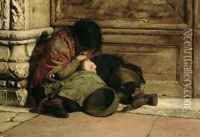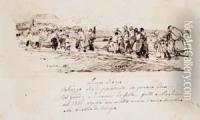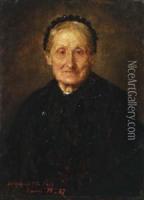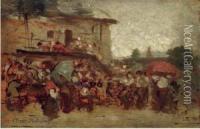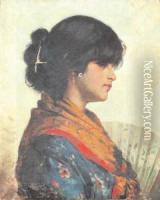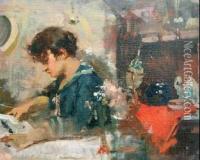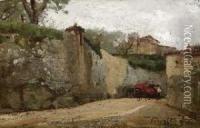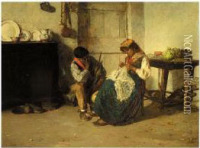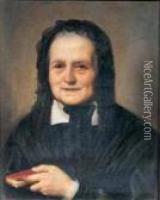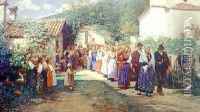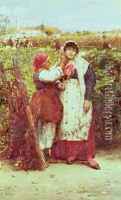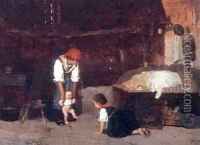Luigi Nono Paintings
Luigi Nono was an Italian avant-garde composer of classical music and remains one of the most prominent figures in the development of experimental and electronic music. Born on January 29, 1924, in Venice, Italy, Nono was part of the post-World War II wave of composers who sought to revolutionize music. He was a member of the influential Darmstadt School, along with other key composers such as Karlheinz Stockhausen and Pierre Boulez.
Nono's early works were primarily serial in nature, reflecting the influence of his mentor, Arnold Schoenberg, as well as Anton Webern. However, Nono soon began to incorporate political themes into his compositions, motivated by his staunch Marxist beliefs. His music often reflected his commitment to social and political causes, and he sought to use his compositions as a form of activism.
Throughout the 1950s and 1960s, Nono's music became increasingly experimental. He began to explore the spatial dimensions of sound, often positioning musicians and speakers in various locations throughout a performance space to create an immersive experience. Nono was also a pioneer in the use of electronic music, integrating taped electronic sounds into live performances, which was groundbreaking at the time.
His notable works from this period include 'Il canto sospeso' (1956), a piece based on letters written by victims of fascism and 'Intolleranza 1960', an opera with a strong anti-fascist message. Nono's commitment to political issues continued throughout his life, and his later works often dealt with themes of peace, socialism, and the plight of the marginalized.
Luigi Nono continued to be an influential and innovative force in music up until his death on May 8, 1990, in Venice. His legacy endures in the world of contemporary classical music, and his works are still performed and studied for their innovative techniques and their intense emotional and political expression.
